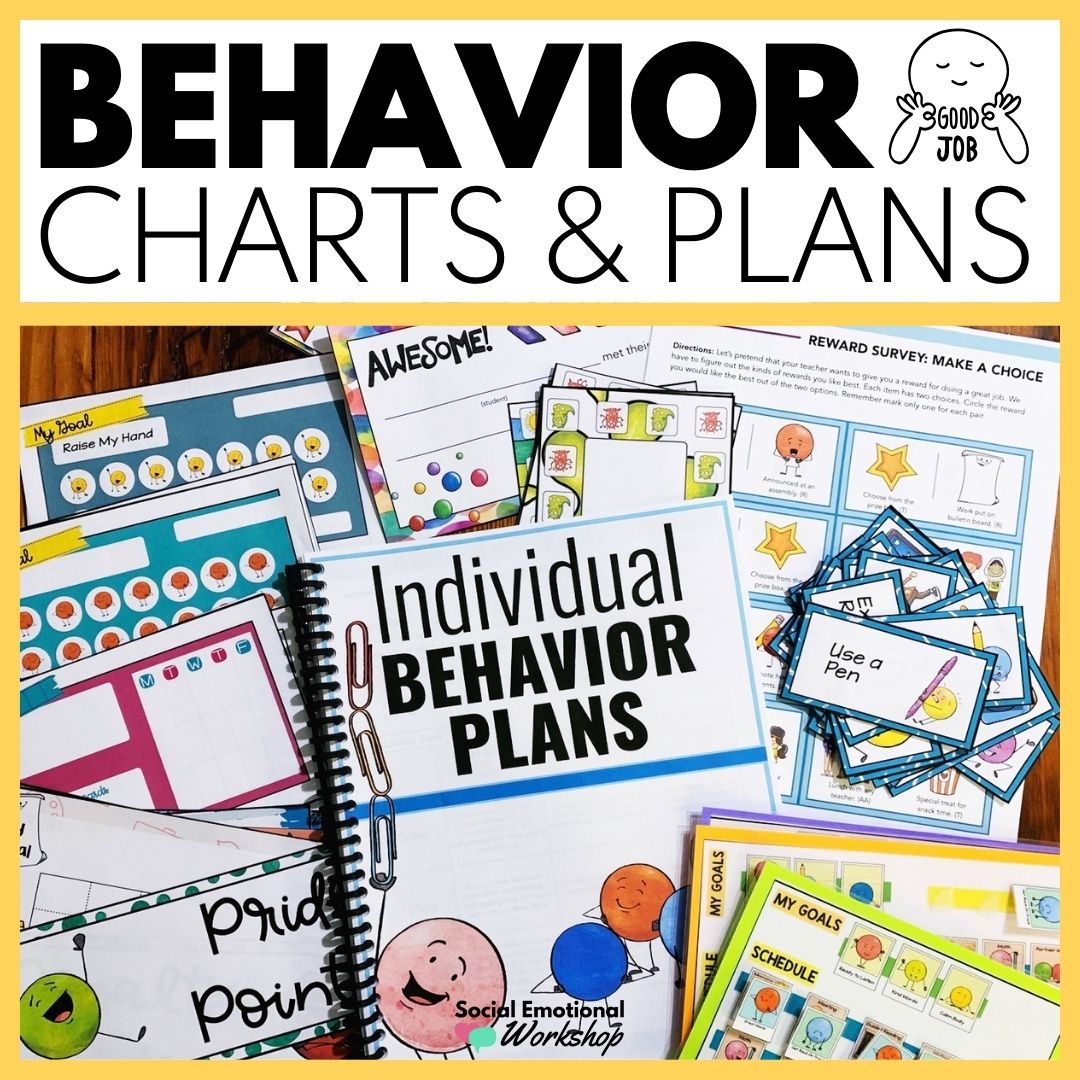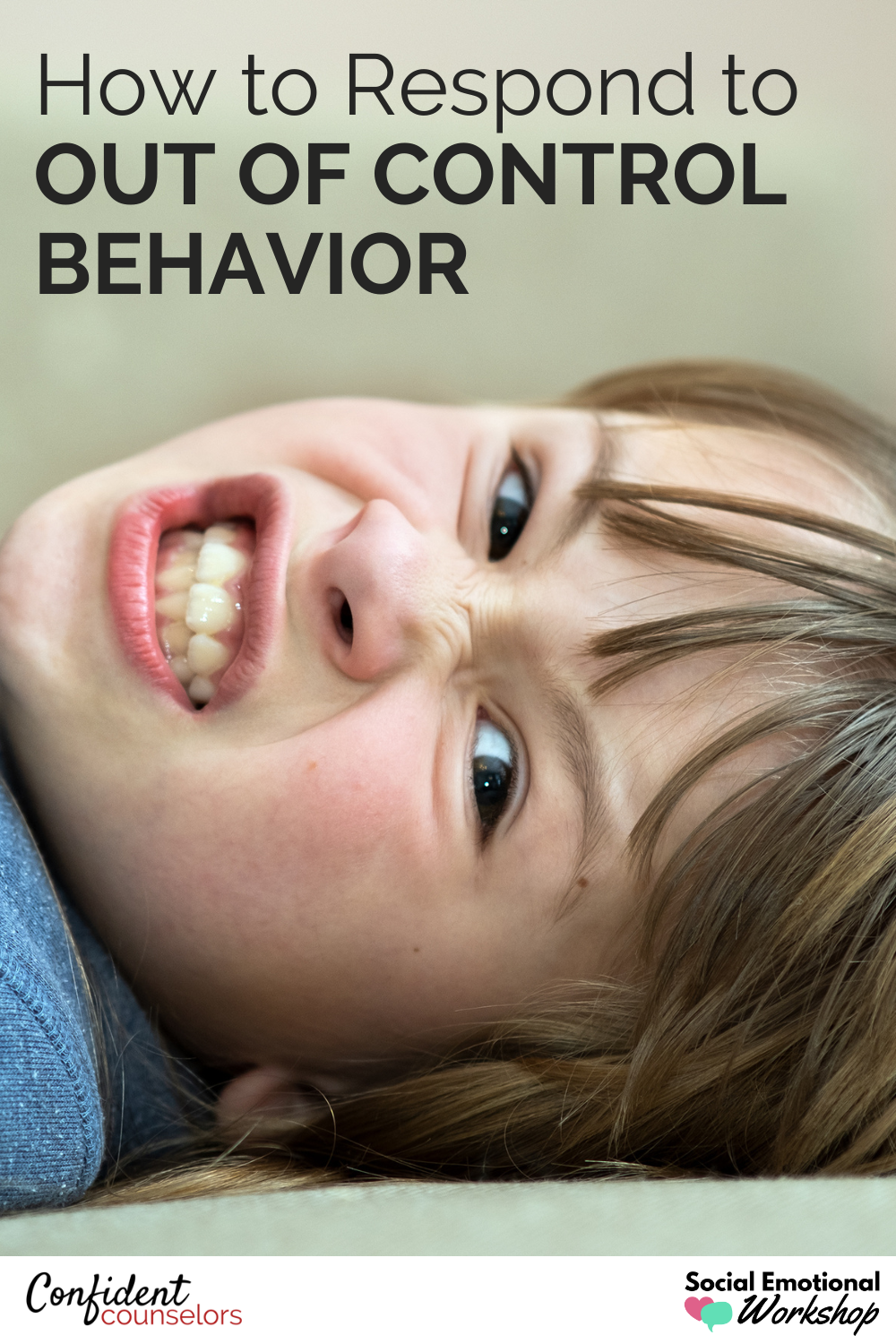Every year there are students with challenging behaviors that disrupt, well, everything. Daily crises take over your schedule and they seem unresponsive to intervention plans. Teachers and staff are exhausted. The calls to "do something" (aka discipline) grow louder. I'm guessing if you landed on this post you are looking for more than another sticker chart or a pass straight to the office for disruptive behaviors.
There are a couple essentials you should and may already have in place:
- comprehensive classroom observations
- a data-informed behavior plan
- communication plan with parents and teachers
Even with those three fundamental pieces, one piece is often missing - all the adults responding consistently and responsively.
What if everyone handled the student's challenging behavior the same? Not just when the meltdown is happening but at each stage of escalation. When all the adults are on the same page and responding consistently, you have a chance of preventing disruptive behavior. That's where a Behavior Response Plan comes in.
This is a plan that breaks down how staff should respond to student behavior at each stage of escalation. What works at the beginning will not work when the student is at the peak of a meltdown.
In this post, we are going to go where and how to intervene at each stage of escalation. Then, we will talk about how to develop a team-based response plan that will bring consistency and responsiveness to your behavior interventions.
Behavior Escalation in 7 Stages
There are seven stages to escalating behavior.
Calm - Trigger - Agitation - Acceleration - Peak - Deescalation - Recovery

1 - Calm
During this stage, everything is going as expected. The student is cooperative and engaged. They are following directions, completing work, and interacting positively. It's going to be a good day!
Calm Strategies
Keep this calm phase going by using:
- Clear expectations
- Warm interactions
- Moderately challenging work
- Regular teacher attention
- Choice when possible
2 - Trigger
Well that perfect calm stage couldn't last forever. Something has happened to upset the student. The triggers can be difficult to catch and are individual to each student. What upsets one person, won't both another. The more you analyze what triggers a student and what their early dysregulation looks like, the quicker you will be able to address what occurred.
Some possible triggers to consider
- Negative interaction with an adult or peer
- Change in the schedule or activity
- Mistakes or failure on a task
- Confusion about an assignment
- Low preference activities
- Being told no
- Interactions with a person they don't like
- Unwanted attention from peers or adults
- Classroom environment - lighting, noise, seating
- Medication changes
- Physical needs - tired, thirsty, hungry, sick
- Worries about performance
- Events from home - arguments, family changes, illness
3 - Agitation
Your Goal - Intervene Early
The escalation begins. In this phase, the student is often unfocused and disengaged. They may be intermittently participating, fidgeting, or staring off. The signs for your student will be unique to them. What behaviors are they exhibiting after a trigger occurs?
This is the optimal place to intervene. Your support will be the most efficient and effective here.
STRATEGIES
- Address and correct what triggered things, if possible.
- Use distraction. Tell a story, ask them about something they like to talk about. Anything to take their mind and feelings off what is bothering them.
- Use humor. Stay away from sarcasm, it can be difficult for students to interpret when they are agitated.
- Casually removing the student from the situation (e.g., help take something to the office, run a message to another teacher).
- Redirect to an easy or preferred task
- Reengage with behavior plan. This might be reminding them about their goals or asking them how they are doing so far today.
- Provide simple choices.
Be careful here. Depending on how long the student has been agitated, strategies that would have worked initially may escalate the situation. For example, a joke may break through or it may make the student angry.
4 - Acceleration
Your Goal - Prevent Further Escalation
The student is focused at this stage but in all the wrong ways. They may be argumentative or refusing to work. They may be interfering with instruction, calling out, ripping papers, arguing with peers, or producing no work or poor quality work.
Unfortunately, this might be when the adults in the room realize there is a problem. Even more unfortunate, they might respond with consequences or anger. Look at that, a power struggle is born.
There are ways to bring a student back down to the calm phase. Which strategies you use will depend on the classroom routines and the behaviors the student is showing. Does the room have a calm down corner? Students may be directed to take some time or use a calming strategy. These strategies should be familiar to a student before this moment.
At this stage, you are looking for any signs of re-engagement. It doesn't have to be perfect. Praise any moves in the right direction.
The biggest pushback you will get is that not responding with consequences seems inconsistent. Isn't inconsistency the hallmark of poor management?
This is a misunderstanding. The key here is to consistently use strategies that are responsive to where the student is at. Blanket responses that you use no matter how the students is behaving is guaranteed to make things worse.
This absolutely does not mean that there is not a discussion or consequence at some point. Just not in the middle of the acceleration phase and in front of an audience.
STRATEGIES
- Adults remain calm
- Provide the student with simple choices.
- Redirect them to a calm, safe spot.
- Focus on leading them through simple calming strategies (e.g., deep breaths)
- If possible, (non-physically) remove the student from the situation
- Empathize with the student (e.g., I understand that you are upset)
- Keep language simple and upbeat.
5 - Peak
Your goal - Keep everyone safe
Well, things have gotten to a crisis point. During this phase, constantly be aware that the student is in flight or fight mode. Their ability to process and make good decisions is limited. They are out of control and they need help to handle things.
Some schools will have explicit plans for how to handle aggressive or destructive behavior in the classroom. It is definitely worth having a constructive conversation with administration about how to handle this stage.
Plans that call for student removal for an extended period of time (in-school suspension) can be problematic as they may reinforce behaviors if the student is looking to escape a situation.
Peak Escalation Strategies
- Isolate the student however possible, either removing them or removing the class.
- When talking to the student, don't process anything. Be a broken record, focusing on getting them calm.
- If you can get them to belly breathe, have them focus on putting their hand on their stomach to make sure they are breathing slow.
- Use 1-3 simple steps shown on your fingers. (1, we calm down. 2, we talk about it, ...).
- Keep yourself safe. Watch your proximity and have another staff member with you.
Please make sure someone in your building has de-escalation and restraint training. Be up-to-date on your state's guidelines regarding student aggression and staff response.
6 - Deescalation
Your Goal - Get Them Back to Calm
During this time, students are past peak escalation. They will be more compliant and you can use that to keep them moving back to calm.
Deescalation Strategies
Have a student move to a more isolated spot and provide them with an easy to complete task, like organizing some papers. This gains compliance, gives them something to focus on, and provides some breathing room. This task should be short and simple.
Reminding students of their calming strategies can also be helpful.
7 - Recovery
Your Goal - Address what happened
This is when you address behaviors that violated expectations. The student is calm and is expecting their behavior to be addressed
Recovery Strategies
- Approach the student by seeking to gain a clearer understanding of what led to the escalation.
- Take ownership for your role in the escalation (e.g. what signs you missed, how you initially responded).
- Engage them in how to repair the situation.
- Ensure parents are aware of what happened and the resolution.
I'm sure you could picture a student you have going up and down this meltdown mountain. Maybe you considered what their triggers were and possible alternative responses at each stage.
Team-Based Response Plan
A Team Response Plan considers each stage of escalation and the best way to respond in each stage.
Behavior Response Plan
Based on the 7 stages of behavior escalation.
It is most effective if the team meets together to discuss possible triggers, what is happening during each stage, and the most effective strategies each person has found. It is important that no staff member feel like they are to blame. If a student is more likely to escalate with them, then it is just a problem to be solved.
- Identify the student's triggers. What happens that bothers or upsets the student?
- Go through each stage and describe how the student behaves. How would someone else know the student is in this stage?
- At each stage, identify strategies that will help the student remain calm or return to feeling calm. Different strategies will work at different points.
- Specify the language to use, what to do, where to go, and who should be involved.
- Discuss the expected response to aggressive and destructive beahvior with your administration.
- Create a repair plan with the student. They should attempt to fix things after a significant behavior escalation.
Other Essential Components
Comprehensive Observations
When a student is showing disruptive or destructive behavior, it is essential to start to document. Observations and data collection will inform your interventions.
Skill Assessment
Another great addition to the Team Behavior Response Plan is a short document identifying what skills the student is lacking and where direct instruction should focus. If a student becomes upset about a peer not working with them, then they may need to work on emotional awareness and coping skills to manage that feeling.
Individual Behavior Plan
Importantly, the Team Behavior Response Plan is not a substitute for a student's individual behavior intervention plan. It is in addition. Use a behavior plan during the calm phase and the agitation phase. It has no real place when a student is escalating or at peak escalation. It also can reignite a student if they are reminded of lost privileges during the de-escalation phase.

Individual Behavior charts & Plans
Communication Plan
It is essential that regular communication about incidents (and progress) happens between teachers and with parents. I like to include a home- school log as part of any behavior plan and response plan.


